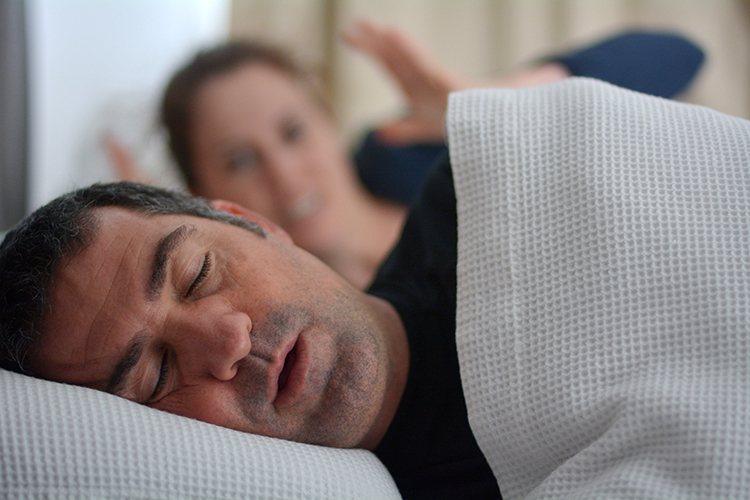Sleep Apnea Treatment
Sleep Apnea is a medical condition where a patient will repeatedly stop breathing during their sleep. It presents itself with signs such as snoring, though these are two different conditions. However, they both can be present independently or together. Snoring alone does not make you tired during the daytime. Sleep Apnea on the other hand reduces the oxygen levels during the sleep and reduces your recovery during the sleep that ultimately leads to early morning or late afternoon tiredness.
Sleep apnea is usually diagnosed by a general practitioner and not your dentist through common symptoms such as sudden shortness of breath during night making it difficult to wake up, possess low energy during the day, difficulty in concentration and mental sharpness, low productivity, irritability, and daytime sleepiness. The best way to find its cause is through a sleep study which requires referral from your GP.

Do you feel as though your sleep is being disturbed by Sleep Apnea? Do you have any other questions?
Ask our dentists here at Local Dental and discover what we can do for you to ensure you’re getting a restful sleep.
What Is Sleep Apnea?

Differentiating between snoring and Sleep Apnea is your ability to recover in your sleep as well as altering your lifestyle with healthy eating habits, exercising, and quitting smoking. Although, they alone might not be enough in the satisfactory treatment of the Sleep Apnea.
Therefore, some of the common interventive treatment option is the sleep apnea oral appliance or the Mandibular Advancement Splint (Oral Appliance) and CPAP (Continuous Positive Airway Pressure) machine. A sleep apnea splint is a hard-plastic custom fitted product that is worn over your teeth, whilst you sleep. The device holds your jaw in a forward position to keep your airways open while you are in supine position while sleeping. This allows you to breathe normally and get a good night’s sleep. A well fitted device can also stop or reduce snoring habits and help you with your clenching and grinding.
There are mainly two types of sleep apnea, causing patients to resort to its treatments. Firstly, a patient can have Obstructive Sleep Apnea, when in horizontal lying down position (usually on your back), your airway is blocked due to the drop of your lower jaw causing the blockage of the airway. This eventually causes loud snoring and stopped breathing for a short period of time until your body’s defense mechanism wakes you up. Secondly, Central Sleep Apnea can also be the cause. Here, one’s brain forgets to breath or send signals to breathing muscles. This is much less common when compared to Obstructive Sleep Apnea.
However, its combination with the former to establish Mixed Sleep Apnea is rather inconvenient for a patient.
Procedure for a Sleep Apnea
Although Sleep Apnea is more common in adults, it can be present at any age; for its predisposing factors are obesity, family history, smoking, high blood pressure and the age above 50. So, the dentist will need to make an impression of your teeth and register your bite, and these records are then sent to a dental laboratory for the fabrication of your custom-made appliance. This process of getting an appliance made is a quick, easy, and painless and can take around 3 weeks.
Taking care of your apnea oral appliance
Before wearing your splint each night, make sure you brush and floss your teeth to avoid decay. Rise your splint with cold water before and after using it. Use a small soft toothbrush and cold water to give it a clean a few times a week. After each use, wash and dry the appliance and store it in its protective container.


















